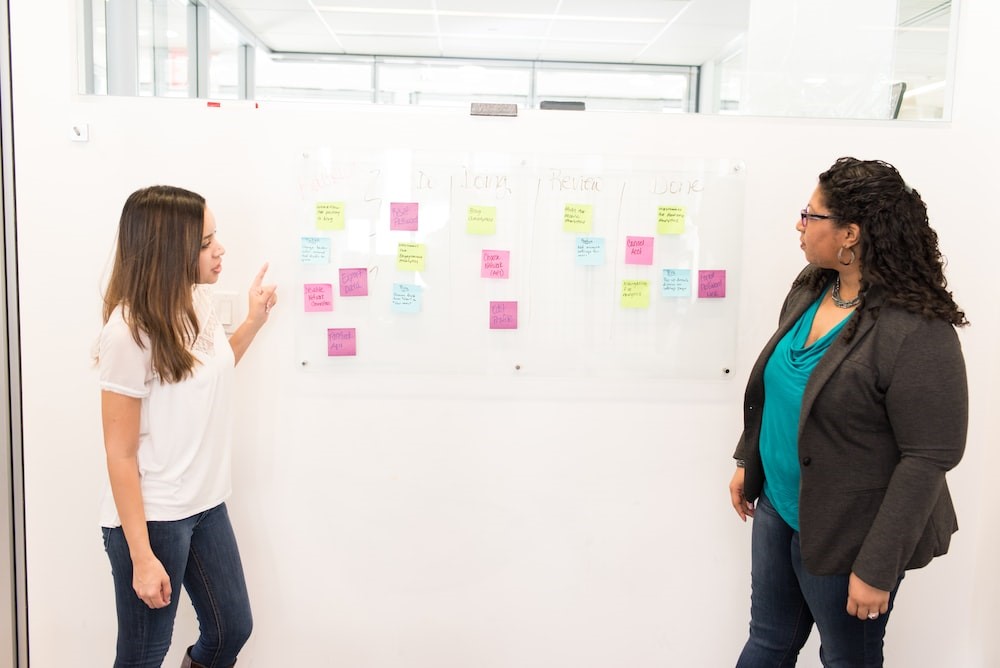Table Of Content
Learn About the Advantages and Disadvantages of SDLC vs STLC in Detail Below
The software development world is big on lifecycles and frameworks. And two of the most common terms thrown around in terms of it are the software development lifecycle and the software testing lifecycle.
Now, with names as alike as STLC and SDLC, people often have a hard time differentiating between the two when discussing the merits of SDLC vs STLC. And it is all the more common among newcomers who are yet unaware how different these two processes are.
So, what exactly is their primary difference? Well, the primary difference is right there in their names itself. SDLC, or software development lifecycle deals with various aspects of a software engineering process, while STLC or software testing lifecycle does the same, but for the project-testing phase.
Still unsure about their difference? Don’t worry, we have got you covered. Let’s dive in and discover the true purpose and uses of SDLC and STLC, understand their steps, and learn how a custom software development services provider can use them to their best advantage for a project.
What is Software Development Life Cycle (SDLC)?

SDLC, or software development lifecycle consists of a set of steps that are designed to help us deliver a software project as per the project needs. Initially published in 1970 by Dr. Winston Royce in his research paper, it was originally conceived as a linear process.
Today however, with the advent of agility, there are some processes that run in parallel. The reason for that is that now, according to agile, some processes like planning and risk management need to be performed at various stages of the project, instead of at the end.
The process consists of the following steps:
- Requirements gathering & planning
- Design
- Execution
- QA and testing
- Deployment
- Monitoring and maintenance
So now that we know what features and steps make up the software development lifecycle, let’s take an in-depth look into them to understand how they help make the software development process simpler and easier.
SDLC Features

Let’s take a look at each of these features of software development lifecycle in detail, in order to understand the core differences between SDLC and STLC properly.
Gathering Requirements & Planning
The process starts with identifying a gap or opportunity within the organization or the business landscape, which could be taken advantage of using an innovative software product or solution. But before you undertake the development of that project, you need to identify and gather the requirements necessary to develop a successful solution for that gap.
For those in the development world, it can be very tempting to jump right into development, especially if the project seems similar to one you’ve done before. However, there is a reason that professional custom software development services have been using the V-model for decades now. It works wonders.
While on the surface a project may seem simple and familiar, it could be an entirely different story once you start to understand its hidden details. And those are the details you need to know if you want your solution to be a success.
Once you have identified the requirements, you need to evaluate if those requirements are not being met by the system in place currently. For this step, you will need the help of subject matter experts like solutions architects or business analysts.
At the end of this process, you will have delivered a business requirement document, also called a BRD, listing all the required functional and non-functional requirements. A preferred manner of doing them is to prioritize them based on their importance to the solution as a whole, and by connecting them to the business function.
Design
Once you have developed the BRD, you are ready to start the design phase. One of the activities businesses usually perform at this stage is evaluating if it is better to use an existing, off-the-shelf solution available in the market, or if it is more suitable to create a custom software solution. Depending on your choice, this is the stage where you may release documents like RFPs and RFIs for your tender process, in case you go for the off-the-shelf solution.
Naturally, where your demands and requirements can be fulfilled by a standard off-the-shelf solution, such as POS, appointment booking etc. it is better to go for a readymade solution. However, if your project has unique demands based on the business or industry needs, that is where innovation is called for, and a custom solution is the preferred option.
Once that is done, your business analysts and UX specialists will sit together to come up with a design that would appeal to your target audience, and create some wireframes or UI mockups to show what your solution would look like visually. Similarly, your technical architecture teams would be working on designing the solution’s architecture, as well as an iterative model to guide the software development team.
Generally, at the end of the design phase, you will have created a prototype, or a set of wireframes at the very least. Moreover, you will also have decided on the development stack to use, a system architecture design, as well as the resources required to finish that project.
Execution
The next phase is the execution or development phase. This is where the core of the software’s work is accomplished. By taking the list of requirement from step one, as well as the UI prototype and other details from step two, software developers turn them into a functioning software solution using a spiral model.
This step generally involves developing the front-end and back-end functionality, integrating various microservices, and setting up the solution databases. Generally, an experienced and able project manager will ensure that the product developed fulfills the requirements specified in the BRD. Moreover, they will also ensure that the product is built in such a way to ensure that the development team for better alignment with actual end-user requirements receives feedback from end-users.
QA and Testing
Next up, is quality assurance and testing, to ensure the solution is free of issues and/or bugs. This software testing process comprises of a set of performance tests, load tests, and extensive manual testing to look for hidden or rare bugs. The purpose is to validate that the resultant solution is functional, and of a high quality to handle the stress and load that will be put on it post-deployment.
The next phase of this is the user testing. This is the most critical test in this process, as it assesses and evaluates whether the system works as the users and the business required it to. And if there had been close alignment between the users and developers in the execution stage, then chances are that this would not be an issue.
Deployment
Deployment phase is the next part of the process where the developed solution is installed and uploaded to the production environment of the platform related to it. Previously, they were more commonly the physical servers in an a business’s data center where the solution was deployed.
However, nowadays, an increasing number of businesses are using different cloud-based hosting services to deploy their solutions.
Ideally, this is also the stage where a business starts to train its people in the new system, in order to facilitate a smoother transition when the new system is live. Moreover, this also helps to identify any problem areas within the system, as well as helps us assess of any existing data needs to be migrated to the new system from the legacy.
However, during the training of your people, you will also be coordinating with a few people or teams who will be supporting the new system being put into place, and discussing with them the protocols to ensure its in running stage once the project development team hands it over.
Monitoring and Maintenance
Finally, the last stage of SDLC would be the maintenance and monitoring of the system put into place. This begins by the project team handing it off to the software maintenance team who will be monitoring and handling it from then onwards for the organization.
This process involves the creation of help files, user manuals, and other documentation to help support teams identify and solve user support requests easily. Moreover, it also contains the frameworks and guidelines to address how changes and improvements will be made to the solutions based on external factors or internal business needs.
What is Software Testing Lifecycle (STLC)?

Now that you have gone through the various elements of SDLC, let’s try and understand the concept of software testing lifecycle.
Essentially, it is a software testing process that ensures robust and comprehensive testing protocols carried throughout the software development process. By ensuring that the software product has been thoroughly tested out at each phase of development, you will be able to deliver a bug-free and quality product easily.
Now, STLC can be of different types, such as mobile app testing, web application testing, cloud microservices testing, and more.
Features of STLC

The software testing lifecycle consists of five different stages, with each stage building on towards the next one to ensure that the tests are planned and carried out efficiently. Let’s discuss these five stages in further detail.
Requirement Analysis
Comparing SDLC and STLC, the software testing lifecycle too starts by analyzing the requirements. However, instead of identifying the requirements in this stage like SDLC, STLC uses the BRD generated in the development lifecycle to analyze and understand the key outcomes and functionality desired from the system.
During the analysis, the testing team will discuss the BRD with every relevant stakeholder, including business analysts and product owner, to understand the dimensions of the project properly. This would also include a thorough coverage of the project’s criticality and compliance requirements, to ensure that all necessary standards are being met.
Planning Testing Strategy
Next, once the requirements are analyzed, the testing team moves on towards planning the software testing strategy. The first thing they do is develop a test strategy document for this project, which will detail how the test team will make use of different software testing tools and technologies at their disposal, such as manual and automated tests, integration tests, and more.
Moreover, they may also list down any specific tests or scripts they may need to create specifically tailored to that project, in order to ensure its flawless function and compliance with standards.
Developing Tests
Then, once you have created your software testing plan, the next step is to start developing your required test scripts and approaches. Using the high-level test cases created in the planning stage, testing specialist will recreate them according to the project requirements based on specific user journeys.
The resultant test cases will be testing for both aspects of a user experience; that is the best path where every interaction is good and positive, and the edge case perspective to see how frustrating or problematic of an experience a user might feel.
Setting up the Testing Environment
Once you have developed the test cases for your project, you will create a test environment in a fresh system, distinct from the development and the production environments. The purpose of this test environment is to ensure that all necessary user personas are integrated and set up with all required data and credentials for testers to simulate the right user experience for their tests efficiently.
Executing Tests until Project Closure
Finally, the tests will be executed once a stable test environment has been developed. The developers will execute different software quality assurance tests and convey their finding to the right stakeholders, including the development team. Based on that feedback, changes will be made to address those issues, and the cycle will repeat up until the project passes muster. Finally, the process will be closed and the project moved to the deployment team.
SDLC vs STLC – Which is Better?

Now that you’ve known what is the difference between SDLC and STLC, you will surely have a good idea of what each of these processes entail. So now, you might be asking, what is the role of SDLC and STLC in software development?
With each of them fulfilling a distinct purpose, here’s how you determine the benefits of SDLC and STLC in detail.
Pros and Cons of SDLC and STLC
Before devising your strategy with SDLC and STLC, you need to know about some of their pros and cons. It will help you to use them with better accuracy and get the required results at the end of the process.
Software Development Lifecycle
You need to use SDLC when:
- When you build a new software system from scratch instead of implementing an off-the-shelf option.
- When the situation calls for a rigid system of development, such as waterfall, over more flexible yet inherently harder to control systems like agile.
- When you are clear on your requirements and vision, rather than discovering them along the way.
- When your organizational process involves creating and sharing detailed documentation regarding the project for greater transparency and record keeping among teams.
Software Testing Lifecycle
While this concerns the testing process specifically, you generally use the STLC process when:
- You want there to be high levels of structure and strategy to your testing plan.
- You want to test individual components of the system before integrating them into the system as a whole.
- You want to see if all parts of the system requirements have been met.
- When quality and robustness are mandatory in the system being developed.
Frequently Asked Questions (FAQs)
| What is the difference between SDLC and STLC? The most basic difference between the two is that SDLC is used to complete the development of a software successfully. STLC on the other hand, is made to help with successfully handling the testing of a software project. |
| How does SDLC help in software development? With the help of SDLC, software developers can properly organize their project development. It helps to perform every task phase by phase, so that software products can be developed without any errors. |
| What are the key phases of SDLC? There are several key phases involved in software development lifecycle. It includes research, ideation, development, testing and deployment. |
| What are the benefits of using STLC? With the help of STLC, you can build quality products with better testing procedures. It ensures to finalize products without any errors or bugs hidden deep inside the programming codes. |
| How does STLC differ from SDLC? There are several differences between STLC and SDLC. Primarily, STLC deals with the overall testing process, whereas SDLC deals with the over development cycle of the application. |
| What is the importance of SDLC and STLC in software testing? Being a software developer, you should know what is the purpose of SDLC and STLC. Both of these processes help to develop applications perfectly, so that project deployment can be completed efficiently. |
| What are the common mistakes made in SDLC and STLC? Developers often commit different types of mistakes in executing SDLC and STLC plans. This includes inadequate market research, wrong tools selection, unrealistic goals projection and more others. |
| What are the Best Practices for SDLC and STLC? The get the best out of SDLC and STLC processes, you need to use some important practices. These includes good competitive analysis, proper project documentation, using streamlined development methodology and more others. |
Conclusion
In short, the SDLC vs. STLC debate is one that is quite easy to grasp and debunk, once you understand its components. Essentially, we can say that the software testing lifecycle can be a part of the software development lifecycle, as SDLC has a comprehensive testing phase in its process.
So, if you are confused by the two similar sounding terms, no worries. The guide above will you get up to speed in no time.
